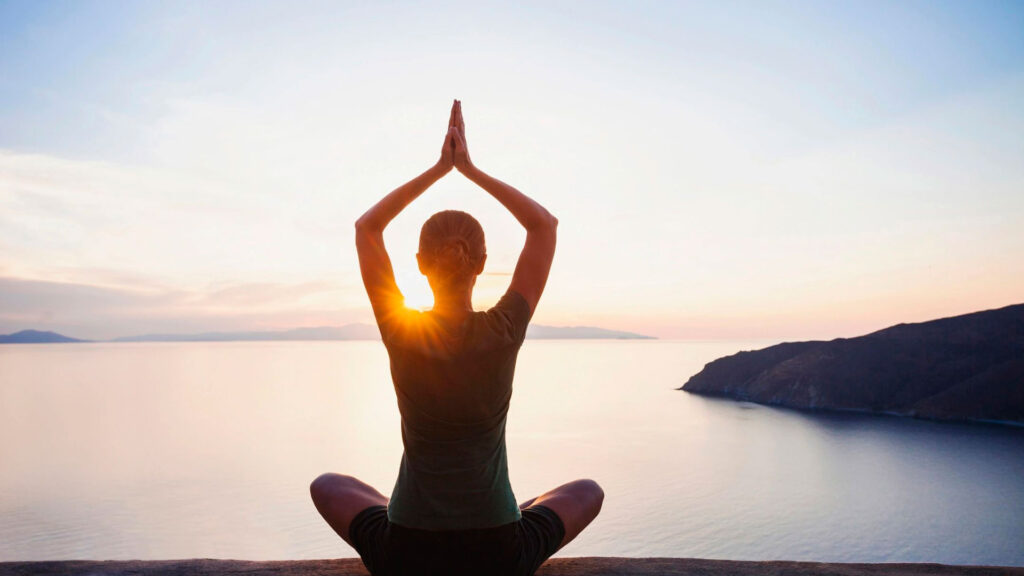The path of yoga https://www.julianalucky.com is open to everyone, regardless of age, gender and health status. Both men and women can practice yoga. But since they have different physiology, the practice of asanas and pranayamas for women has its own distinctive features that should be taken into account.
This was first publicly announced by the daughter of the famous yoga master B.K.S. Iyengar, Gita Iyengar. In her book Yoga Practice for Women Throughout the Cycle, she justified the need to adapt the practice based on the functioning of the female hormonal and reproductive systems.
“When it comes to the principles of yoga, sincerity in approach and application of methodology makes no difference. However, when it comes to the practice of asanas and pranayama, their application in sadhana (practice) is different. Women should pay attention to this in order to maintain their physical and mental health.”
There is another, rather categorical point of view: the practice of yoga is universal and should not be adapted for women. What position to adhere to, whether to do yoga during menstruation is the personal choice of a woman. We will give recommendations on organizing practice, taking into account the phases of the cycle, for those who are ready to observe and focus on their well-being.
What happens during the menstrual cycle?
The body of the uterus consists of 3 layers:
The outer (serous) layer is the perimetrium,
Middle (smooth muscle fibers) – myometrium,
Internal (mucous membrane, consisting of integumentary and glandular epithelium).
The endometrium, in turn, also has 2 layers, the upper (functional) is rejected every month with blood during menstruation in response to a change in the amount and ratio of certain hormones.
The menstrual cycle is divided into three phases:
Follicular phase (from about day 1 to 13 of the cycle, estrogen levels rise);
Ovulatory phase (from about day 13, the level of luteinizing hormone increases);
Luteal phase (average day 15-28 of the cycle, progesterone levels increase).
In each phase, the ratio of hormones changes and, among other things, affects the general well-being, the condition of the muscles and connective tissue. It is advisable to take this into account when planning classes.
Features of yoga practice in different phases of the cycle
The first day of the cycle is considered the day of the onset of menstruation. The average cycle time is 28 days. If yours is longer or shorter, the duration of the phases may vary. Their change can be noticed by observing your well-being and the general tone of the body.
Practice in the follicular phase (estrogen), after the completion of menstruation
High levels of estrogen stimulate fibroblasts, the cells that form collagen. This is important for updating and strengthening the ligaments of the uterus, which is preparing for possible fertilization. At the same time, collagen is actively synthesized in all connective tissues: in cartilage, bones, tendons, etc., their density also increases.
This process is helped by increased production of somatotropin – growth hormone. Its level in this phase is high, which means that protein is actively synthesized and decays more slowly, fat is deposited more slowly, the ratio of fat and muscle changes in favor of muscle tissue.
We can say that this phase accounts for the monthly peak of physical fitness. Practice during this period is almost no different from men’s. Good power loads, statics and interval training.
It is useful to perform inverted asanas, abdominal manipulations, uddiyana bandha is especially favorable, as it mechanically lifts the internal organs. (Attention! There are contraindications!)
This is important, because in the previous phase, under the influence of cortisol and progesterone, the walls of the veins, ligaments, and internal organs are slightly stretched.
It is recommended to work with the muscles of the pelvic floor, to practice breathing techniques with forced inspiration.
Practice in the ovulatory phase
If this phase of the cycle proceeds normally and you feel good, then the practice can be continued as usual. With an emphasis on performing inverted asanas in various variations.
If there are problems with the cycle or conception, it is recommended during this period to exclude such complex backbends as urdhva dhanurasana (full bridge), kapotasana (dove pose), vrishchikasana (scorpion pose). And concentrate on doing stretching forward and inverted asanas.
If you still want to perform asanas for extension of the spine, you should do it with props: give support to the pelvic region or place the legs on a raised platform so that the pelvis is above the level of the chest. And pay special attention to the correct execution technique, that is, pull the lower third of the abdomen inward and upward, retract the lower ribs.
Practice in the luteal phase (progesterone)
Under the influence of progesterone, the degradation of connective tissue gradually begins. It is considered a synergist of cortisol, together they suppress the work of fibroblasts, slowing down the renewal and compaction of the connective tissue.
Smooth muscles are weakening, which means that it is better to exclude techniques such as agnisara dhauti kriya. Especially if there is a predisposition to omissions, dysplasia, etc. Also, long static is not recommended – holding asanas for more than 30 seconds.
In this phase of the cycle, it is good to practice asanas for stretching all lines of the body, dynamic practices in the style of vinyasa flow, you can practice inverted positions, abdominal manipulations (agnisara dhauti with caution or exclude).
Yoga practice during menstruation
The task of this stage is the evacuation of the old endometrium. To help the process, sequences of asanas are recommended from simple stretches (for example, adho mukha virasana, janu shirshasana, etc.), poses for opening the hip joints in a sitting or lying position (for example, upavishta konasana, badhakonasana, malasana, etc.). They will relieve tension in the abdomen and lower back, relax the cervix, which will facilitate the evacuation of blood and endometrium.
Of the respiratory practices, nadi-shodhana pranayama or its preparatory version, anuloma viloma, are optimal.
At this time, you should devote more time to relaxation techniques: perform a long shavasana or yoga nidra practice.
What should be excluded:
1. All inverted asanas, i.e. such postures in which the pelvis is above the heart. Inverted positions prevent the natural flow of menstrual blood and the exit of the endometrium. This disrupts the natural cleansing processes and can lead to hormonal imbalances, and in the worst case, stop periods.
Also, in inverted positions, due to a decrease in intra-abdominal pressure, conditions are created for retrograde reflux of blood and endometrium. Its cells can begin to develop in the fallopian tubes, ovaries, on the tissues of the intestines, bladder, etc. and be reborn under the influence of hormonal fluctuations during the following cycles.
2. Asanas with pressure and compression of the abdominal cavity (for example, navasana, mayurasana, dhanurasana), also deep twists (marichiasana, ardha matsyendrasana, etc.). They create tension in the abdominal area, can increase bleeding and cause cramps.
3. Forced breathing practices, bandhas (for example, uddiyana bandha, mula bandha, kapalabhati, bhastrika, agnisara dhauti, nauli). They lower intra-abdominal pressure, the direction of movement of menstrual blood changes, evacuation is difficult.
With abundant discharge and poor health in the first 1-2 days, the practice should be postponed. If the menstrual cycle is painless, then the practice is simply adjusted taking into account the above contraindications in this period.
It is especially important to follow these recommendations if your periods are painful. This indicates dysfunction and it is likely that a properly organized practice will help reduce soreness.
If this is your case, try a simple set of two exercises:
1. baddhakonasana (5 minutes of retention, without tension);
2. the cycle of marjariasana, sometimes it is called “cat-cow” in dynamics (3-5 minutes).
The uterus is fixed by strong ligaments and slightly tilted forward (anteversion). These exercises in combination allow you to gently relax the cervix and change the angle of the uterus so that the evacuation of the endometrium is as easy as possible.
The effect of such a cycle lasts for 4-6 hours until a new “portion” is rejected, so it is recommended to repeat the exercises throughout the day, especially with painful menstruation.
Energetic aspect of practice during menstruation
If we do not limit ourselves to the physical plane, but take into account the effect of asanas on the prana flows in our body, it is worth considering the effect of this period on the circulation of apana.
Apana is a type of prana (life energy) that circulates through our energy body from top to bottom and is responsible for the cleansing processes in the body. It is believed that in inverted positions we block the natural flow of apana. For preventive purposes, this kind of stimulation is highly encouraged in practice, but not during the female cycle. During this period, you should not interfere with the natural process of cleansing the body.
In general, during the period of menstruation, the body of a woman needs rest and recovery. So if you feel like you need to take a break and just relax, do it without remorse.
These are general recommendations for building practice into phases of the cycle. We are all different and have our own history of relationships with our own body, so first of all you should rely on your well-being.
Regular yoga practice allows you to listen more sensitively to the needs of the body, and if your body is now saying that it needs rest, do not ignore its signals.
